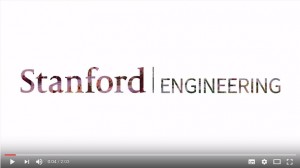Quakefinder Blog
China to launch an earthquake research satellite similar to QuakeSat
Nearly 15 years after Stellar Solutions and QuakeFinder launched and operated the world’s first commercial cubesat, QuakeSat, China and Italy have partnered to launch a similar satellite this year to monitor electromagnetic phenomena as precursors to earthquakes. The CSES (China Seismo-Electromagnetic Satellite) contains multiple instruments including magnetometers with the intent of investigating upper atmospheric activity related to seismic events. For more information on QuakeSat, see: https://www.quakefinder.com/science/about-quakesat/. For more information on CSES, see: http://cses.roma2.infn.it/node/18.
QuakeFinder 4th Quarter Newsletter 2016
History of Tornado Forecasting, Part 1.
This newsletter is a continuation of our series of studies into the history of weather and natural disaster forecasting. The intent of these studies is to understand the pioneering efforts of those who brought us these capabilities, the often-messy process of discovery, the societal reaction and impacts of forecasting, the resistance of establishment naysayers, and all the setbacks and triumphs along the way. QuakeFinder seeks to enable an earthquake forecasting system and gathering these lessons-learned from history will help guide us on our quest. The following article is a look into very early days of tornado forecasting.
Did you know the first official tornado forecasts in the U.S. were made in the 1880s? According to author Marlene Bradford of Scanning the Skies – A History of Tornado Forecasting, these forecasts became highly controversial, were quickly terminated, and a ban on the word ‘Tornado’ in government weather forecasting was instituted until 1938.
Read more
QuakeFinder Participates At The AGU
QuakeFinder presented the results of our 2016 data analysis at the American Geophysical Union meeting in San Francisco on December 16th. QuakeFinder’s poster entitled “An Algorithm Framework for Isolating Anomalous Signals In Electromagnetic Data” received considerable attention from the conference attendees and praise from industry experts. Members of the QuakeFinder team also attended the Natural Hazards session where other electromagnetic (EM) precursor research was presented. The EM community is growing and making substantial progress toward discovering patterns in Earth-emitting signals prior to earthquakes.


